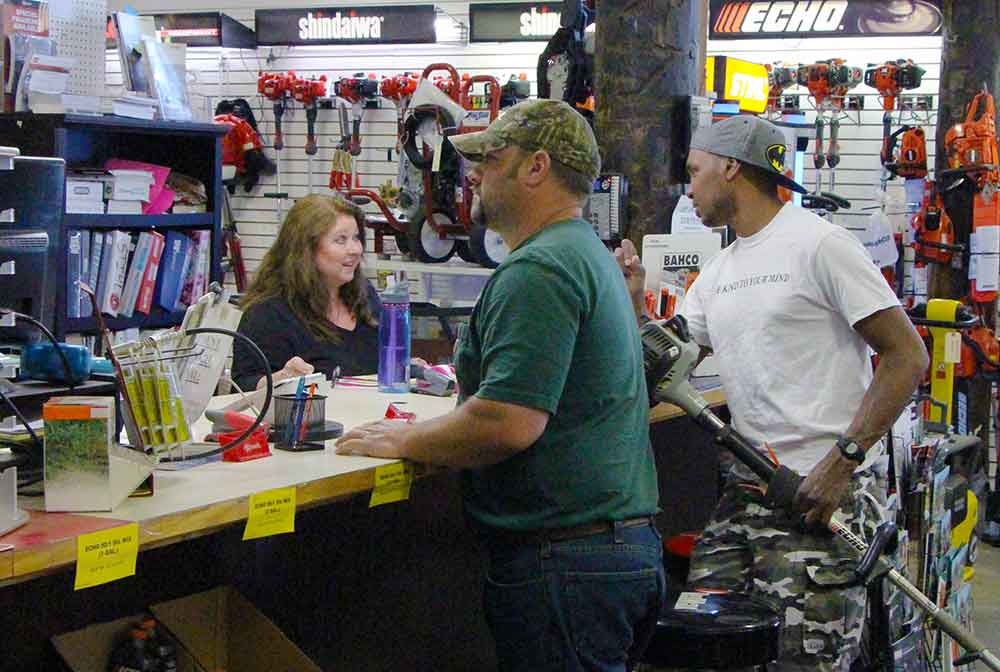
Share On Social
Conversations With Prospects
Article By John Chapin
I was recently in a sales meeting for a company that I just started working with. One of the subjects that came up was how to handle the first interaction with the prospect. By first interaction, I’m referring to the first conversation with someone who seems to have some interest and has decided to at least give you a few minutes of their time. In sales meetings, I’ll usually ask if someone has an example of what they do in that situation and if they could share it with the group. In this case, Wayne volunteered. He’s a veteran at the company having sold for them for about 17 years. He started speaking and after about 90 seconds of verbal diarrhea, I stopped him.
What came out of his mouth was a monologue about their company and their products. It amazes me how much this happens. Most lectures, like the one Wayne was giving, last five to 10 minutes, or more, and the salesperson does not ask one question or get any input from the prospect, they just drone on hoping they’ll say something the prospect will find interesting.
The most important part of a first conversation with a prospect is to get them talking as much as possible. The 80/20 rule applies here. Now depending upon whom you’re talking to, what kind of initial impression you’ve made, when you catch them, their personality type, etc., you may or may not achieve 80/20, but that’s the goal: Them speaking about 80% of the time, you speaking about 20% of the time.
And, when you do speak, most of that will be in the form of asking well thought out questions that both separate you from your competitors and help you determine the prospect’s needs, wants, and desires. Near the end, you may mention some ways you, your company, or your product might be a good fit for what they are looking for or make some comments on some of what they shared with you but this first conversation, even though you are controlling it, as you control all sales situations, the prospect is the star of the show.

If they open the conversation by asking any questions about you, your company, or your product, you can address those briefly, but you want to get them talking. Later you can fill them in on your product lines based on the information they shared with you about what they may or may not be looking for. For example, if they say something like, “So, I’ve heard about your company, but really don’t know a lot.” Come back with, “Well, I’m happy to share some details about our company and why many in the industry currently do business with us and a lot of that will depend upon your current situation and what you’re looking for. Is it okay if I ask you a few questions about your current situation?”
After getting an affirmative response, you can ask your diagnostic questions to determine needs, wants, problems, and desires, and determine whether or not you have a solution for them.
Questions you ask will revolve around what their current situation is, if they have any wants, needs, or problems and how bad and urgent are they, when they looking to make a decision, how they make a decision, are there any rules or parameters within which they’ll make a decision, what are the most important factors in making a decision, what kind of resources do they have to invest in a solution, etc. Basically, your questions will focus on how ready, willing, and able they are to invest in a solution that involves you. Of course, you also want to make sure you listen well to the answers and get details documented.
Here are some other things to consider:
- Verify important information.
- You need to be scripted and you need to practice questions and what you’re going to say ahead of time; be prepared. The best teams, movies, shows, and performances are all scripted and all the best players practice them and know them cold.
- Close during the call, whether that be a sales attempt or gracefully bowing out because you realize this is not a good prospect for you. You must close on all calls.
Above all else, remember, especially in this first conversation, to let the prospect talk more than you and make sure you listen well. If you catch yourself talking for a couple of minutes or more at any point, it’s probably time to ask a question or simply shut up and let them speak.
John Chapin is a motivational sales speaker and trainer. For his free newsletter, visit www.completeselling.com. Chapin has over 35 years of sales experience as a number-one sales rep and is the author of the 2010 sales book of the year: Sales Encyclopedia. Email: [email protected].
Latest News
This Old House’s Kevin O’Connor Will Deliver Keynote for Equip Attendees
Renowned This Old House host and home improvement expert, Kevin O’Connor, will deliver the keynote address, sponsored by Kress, at Equip focusing on energizing landscapers, contractors, dealers, and manufacturers and helping them identify ways to build their business. The trade show, which drew over 27,000 people last year from all 50 states and 46 countries, will be held October 15-18 at the Kentucky Exposition Center (KEC).
Yakta Unveils Full Production Line
Yakta, building upon 35 years of manufacturing excellence through its sister company Arrowquip, transfers a customer-focused approach to the zero-turn mower industry and has announced full-scale production of its range of zero-turn mowers. Fresh off the success of last year’s Equip Expo prototype display, Yakta’s production lineup, including the YXR 710, YXR 610 and YXR 410, with the YXR 910 soon to follow, boast industry-shattering durability, from their strong I-beam caster arm construction to their 7-ga. steel decks—strength that sets a new standard in mower resilience.
Rotary Announces New Additions to Sales Team
Rotary Corporation has appointed two new territory sales managers as it expands the sales division to meet the needs of a growing dealer network, according to an announcement by Mark Smith, Chief Sales Officer.
Lightspeed DMS Appoints Brian Provost CEO
Lightspeed DMS LLC, a recreational dealer management software provider, has announced that Brian Provost has been appointed chief executive officer, succeeding Kris Denos. Lightspeed offers a comprehensive, modern dealer management software platform and suite of solutions used by 3,800 North American locations. Lightspeed is a subsidiary of Brookfield Business Partners, the flagship listed vehicle of Brookfield Asset Management’s Private Equity Group. Brookfield Partners owns and operates businesses like Lightspeed that provide essential products and services and which benefit from a strong competitive position.
FEATURED ARTICLE: 12 Keys To Hiring Sales Reps
Article by John Chapin – With the current hiring systems companies use, only about 20% of salespeople work out long-term. Even if you’re at 50%, is it really worth all the time, effort, and money that you waste hiring the wrong salespeople? Below are some tips to try to get a 90 to 95% hiring success rate and save thousands of hours, headaches, and, over the long-term, likely hundreds of thousands of dollars.
Rotary Has Full Line Of Arborist Supplies
Hundreds of professional-grade arborist products are featured in a 50-page section of the Rotary’s 2024 Master Catalog, including the latest gear from leading brands such as Buckingham, CMI, Kask, Kong USA, Pelican Rope and U.S. Rigging Supply.
Maruyama Develops Engine Using Hydrogen
Maruyama US, Inc. (MUS) in conjunction with parent company Maruyama Manufacturing Company,...
Briggs CEO Departs After Five Months
In August 2023, Joe Liotine was named Briggs & Stratton’s Chief Executive Officer after...



